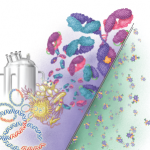In a time during which Congress seems increasingly paralyzed by complexity, it will likely be the states that will lead the way. With the recent revelations regarding Aetna’s preapproval review/nonreview practices, patients across the country are likely starting to wonder how carefully their records were scrutinized before their request for a biologic (or another inconveniently expensive intervention) was rejected. Colorado, Washington and Connecticut have already initiated their own reviews of Aetna’s practices, and other states are bound to follow suit.8
Over the next several months, we are likely to get a crash course in how insurance companies actually make the decisions that impact so many of our patient’s lives.
Biosimilars were supposed to have rendered most of these issues moot. Alternatives to brand-name biologics creates competition, and competition lowers prices. Lower prices remove the profit motive for the preapproval process, and insurance companies would move on to bigger game. Quod erat demonstrandum.
So what happened? For all their promises, biosimilars have had trouble establishing a foothold in the U.S. Of the 240 biosimilars in development, only nine have been approved by the U.S. Food and Drug Administration, and only three are now in use.9 It gets worse: I defy you to find a colleague who has deliberately switched a patient to a biosimilar.
Part of the problem is the birthing process associated with new statutes. Legislators may write the laws, but it is up to the courts to determine what the laws mean. There are now multiple lawsuits winding their way through the American court system, each designed to prevent biosimilars from seeing the light of day. These delays cost money. Add to this uncertainties regarding intellectual property, and the costs continue to mount. Thus, in the U.S., use of a biosimilar may save an insurance company only 15% of the costs associated with using the brand-name originator, a cost savings that is easily offset by the sweetheart discounts engineered by insurance companies for steering patients toward biologic X, rather than biologic Y.10 Ironically, patient assistance programs contribute to the problem by making it cheaper for many patients to continue to take brand-name biologics, rather than transition to a biosimilar.
Of the 240 biosimilars in development, only nine have been approved by the U.S. Food & Drug Administration, & only three are now in use. It gets worse: I defy you to find a colleague who has deliberately switched a patient to a biosimilar.
Eventually, statute will be turned into precedent, and once a clear pathway from development to market has been carved by the courts, the cost savings should start to emerge. In Sweden, for example, the availability of anti-TNF biosimilars has caused the price of drugs in this class to drop by 39%; prices in the U.S. will eventually follow suit.11 The Rand Corporation estimates that the use of biosimilars will lead to $54 billion in healthcare cost savings from 2017 to 2026.12 We can only hope.



